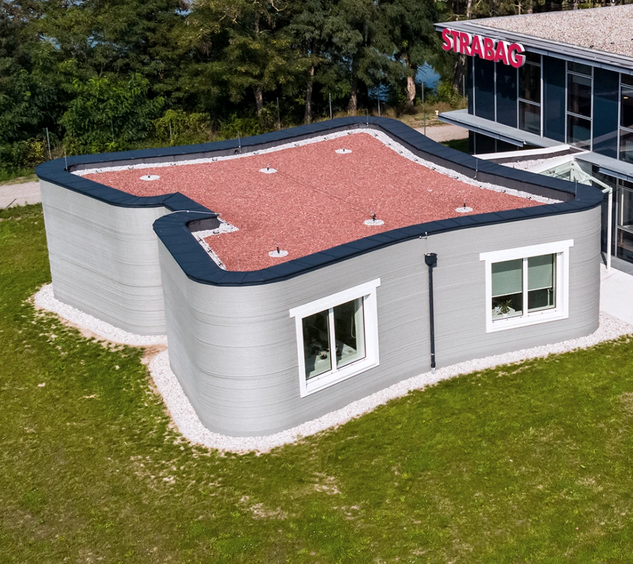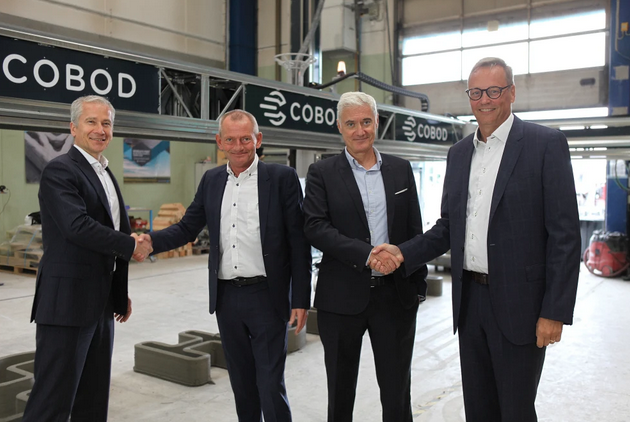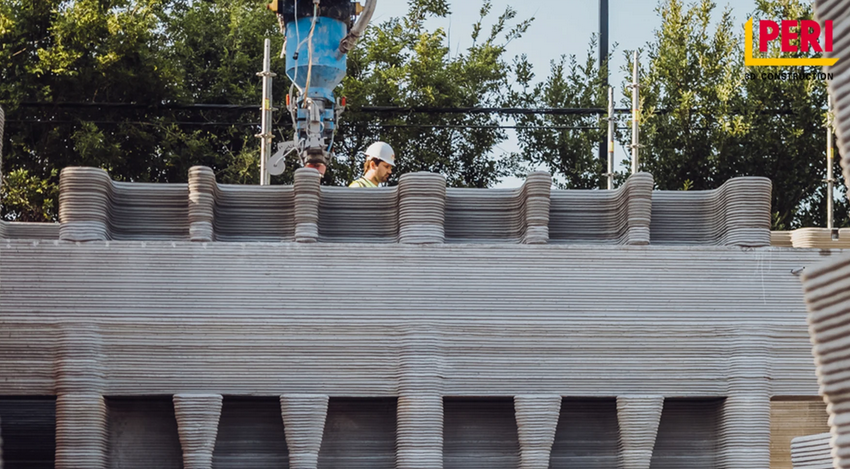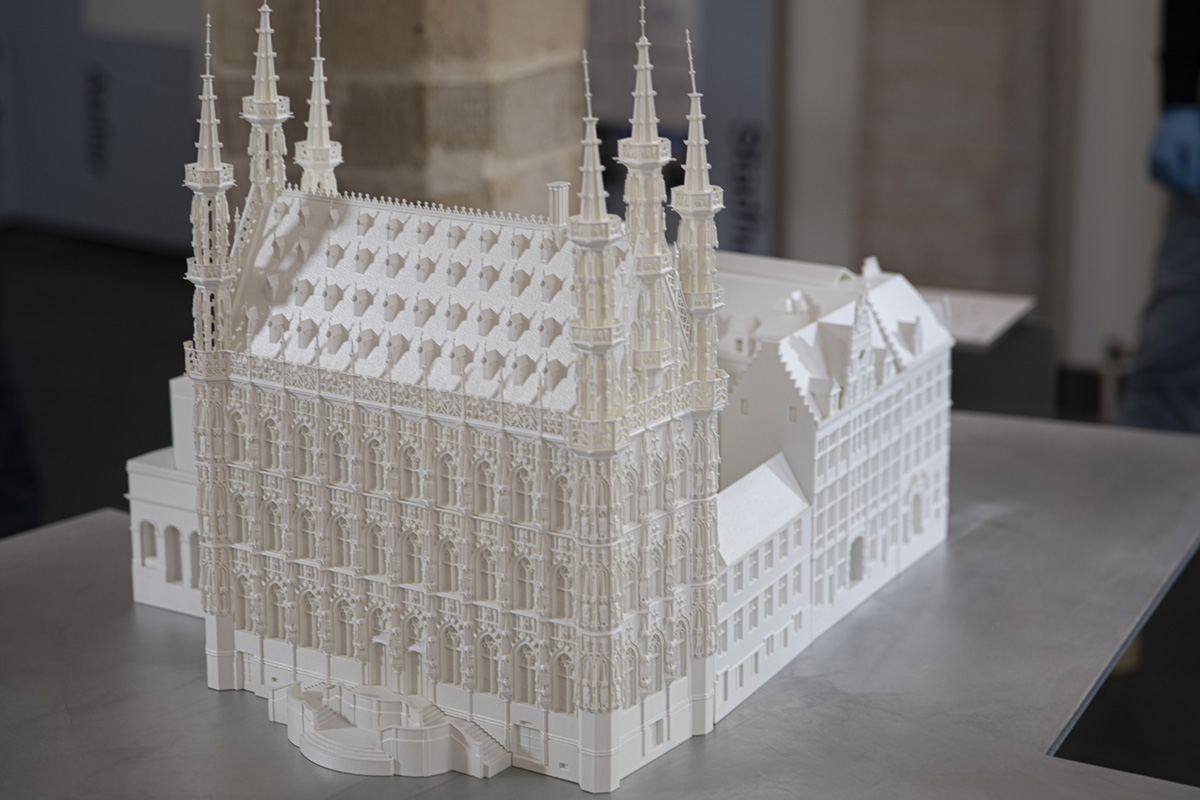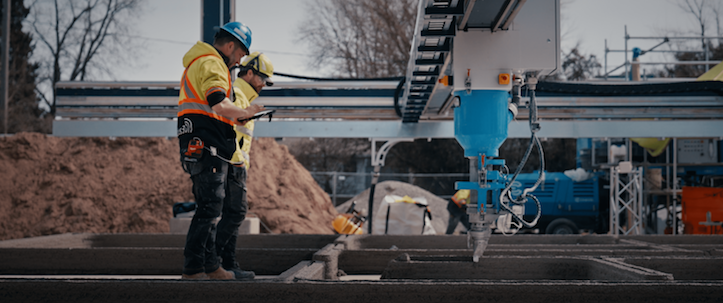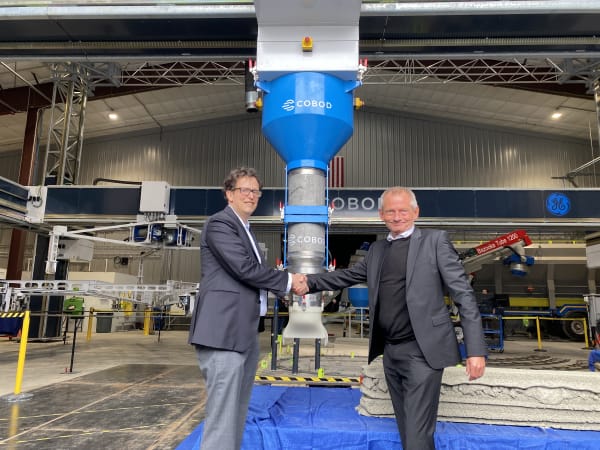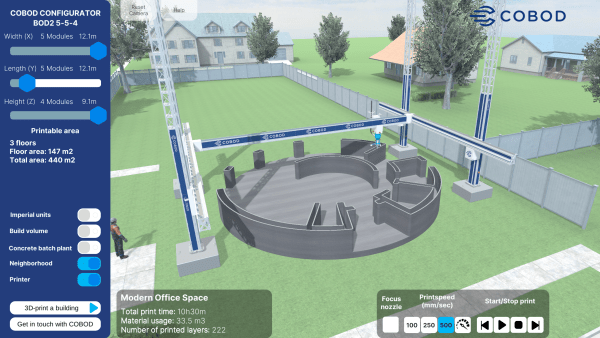Office building located in Hausleiten, Austria - the country’s first 3D printed building
Designed by Mense-Korte Achitects (Germany), 3D printed by PERI in cooperation with Austrian STRABAG
Office extension of 125 m2 3D printed with a COBOD BOD2 3D construction printer in just 45 hours (link)

 Deutsch (Germany)
Deutsch (Germany)  Polski (PL)
Polski (PL) 